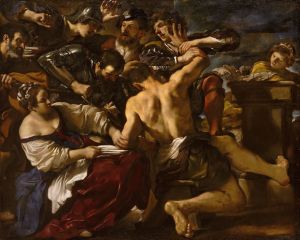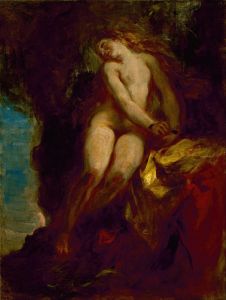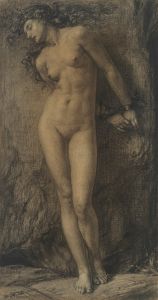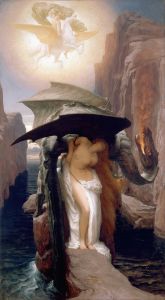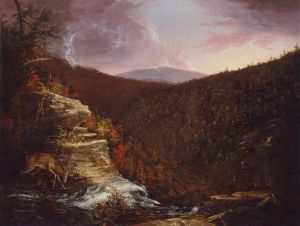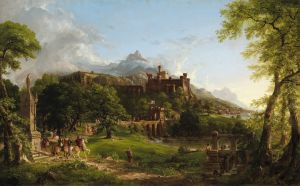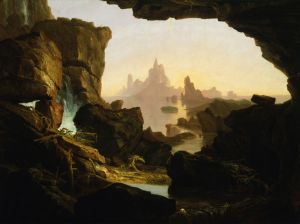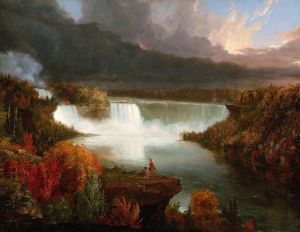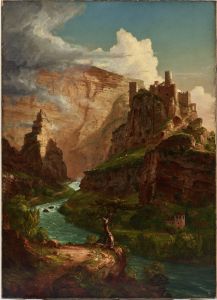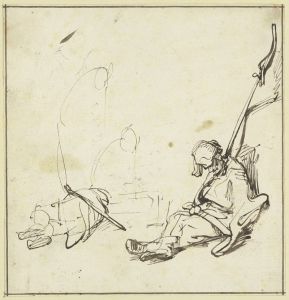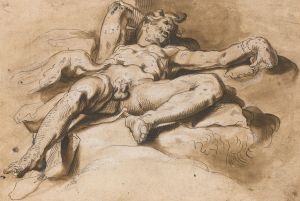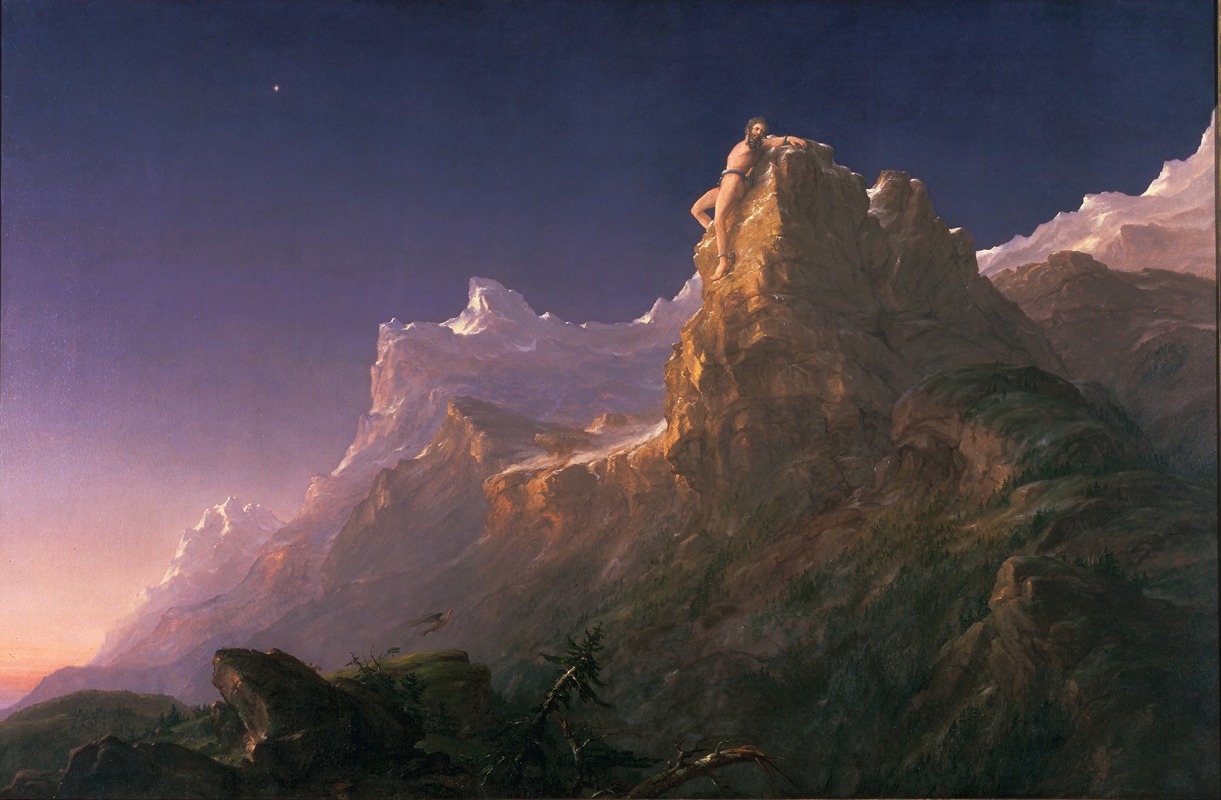
Prometheus Bound
A hand-painted replica of Thomas Cole’s masterpiece Prometheus Bound, meticulously crafted by professional artists to capture the true essence of the original. Each piece is created with museum-quality canvas and rare mineral pigments, carefully painted by experienced artists with delicate brushstrokes and rich, layered colors to perfectly recreate the texture of the original artwork. Unlike machine-printed reproductions, this hand-painted version brings the painting to life, infused with the artist’s emotions and skill in every stroke. Whether for personal collection or home decoration, it instantly elevates the artistic atmosphere of any space.
"Prometheus Bound" is a painting by the American artist Thomas Cole, completed in 1847. Thomas Cole, born in 1801, is widely regarded as the founder of the Hudson River School, an American art movement that flourished in the mid-19th century. This movement is characterized by its realistic and detailed portrayal of American landscapes, often imbued with romanticism and a sense of the sublime.
The painting "Prometheus Bound" is inspired by the ancient Greek myth of Prometheus, a Titan who defied the gods by stealing fire from Mount Olympus and giving it to humanity. As punishment, Zeus, the king of the gods, ordered Prometheus to be bound to a rock where an eagle would eat his liver every day, only for it to regenerate each night. This myth has been a popular subject in art and literature, symbolizing themes of rebellion, suffering, and the quest for knowledge.
Cole's depiction of Prometheus is dramatic and evocative, capturing the intense emotion and grandeur associated with the myth. The painting portrays Prometheus as a solitary figure, bound to a rugged cliff amidst a vast and tumultuous landscape. The setting is characterized by dramatic contrasts of light and shadow, with stormy skies and jagged rocks enhancing the sense of desolation and torment. The eagle, a central element of the myth, is depicted as a menacing presence, poised to attack Prometheus.
Thomas Cole's interest in the Prometheus myth can be seen as part of his broader engagement with themes of nature, human endeavor, and the divine. Throughout his career, Cole often explored the relationship between humanity and the natural world, as well as the moral and spiritual dimensions of human experience. In "Prometheus Bound," these themes are vividly expressed through the interplay of the human figure and the overwhelming forces of nature.
The painting is also notable for its technical execution. Cole's use of color and composition demonstrates his mastery of landscape painting, with meticulous attention to detail and a keen sense of atmospheric effects. The dramatic lighting and dynamic forms contribute to the overall impact of the work, drawing the viewer into the mythological narrative.
"Prometheus Bound" reflects Cole's fascination with the sublime, a concept that was central to the Romantic movement and emphasized the awe-inspiring power of nature and the human response to it. By choosing a mythological subject, Cole was able to explore these ideas within a framework that was both timeless and universally resonant.
Today, "Prometheus Bound" is recognized as an important work within Thomas Cole's oeuvre and the broader context of 19th-century American art. It exemplifies the artist's ability to blend narrative content with landscape painting, creating a work that is both visually striking and rich in symbolic meaning. The painting is held in the collection of the Wadsworth Atheneum Museum of Art in Hartford, Connecticut, where it continues to be appreciated by audiences for its artistic and thematic significance.





